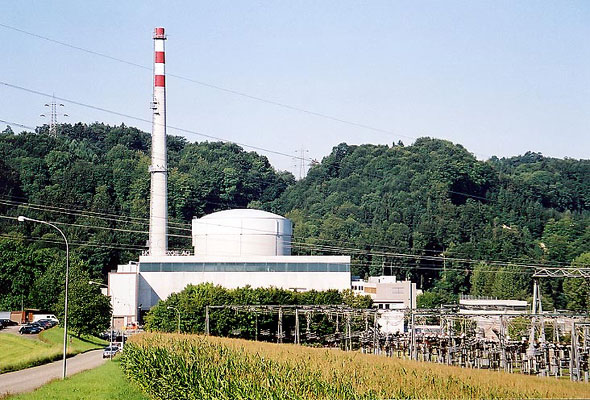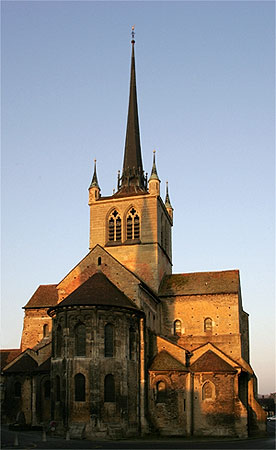|
Ferenbalm
Ferenbalm (french: Les Baumettes) is a municipality in the Bern-Mittelland administrative district in the canton of Bern in Switzerland. History Ferenbalm is first mentioned in 1123 as ''villa de Balmis''. Since the 16th Century it was called ''Feren-Balm'' to differenate it from Oberbalm. The oldest trace of settlements in the area are scattered grave mounds which are probably from the Hallstatt era. In addition, a grave mound from the La Tene era has been discovered. There was a Roman settlement at Gümirain, of which only bricks and ceramics remain, and another at Biberen, from which bronze pipes have been found. A document has been found which claims that the Kings of Burgundy gave this region to Payerne Priory in 961-62. However it is now believed to be a later forgery. However, by 1123, Ferenbalm was part of the estates of the Priory. During the 13th century the Counts of Kyburg acquired the village and made it part of the ''Herrschaft'' of Oltigen. In 1410, the Kyburg ... [...More Info...] [...Related Items...] OR: [Wikipedia] [Google] [Baidu] |
Bern-Mittelland (administrative District)
Bern-Mittelland District in the Canton of Bern was created on 1 January 2010. It is part of the Bern-Mittelland administrative region, and is the only district in the region. It contains 75 municipalities with an area of and a population () of . It is made up of the valley of the rivers Aare and Emme, some of the foothills of the Bernese Alps, as well as the plain around the capital Bern, and has many small farms and hilly forested regions with small to mid-sized towns scattered throughout. It is perhaps best known by foreigners and visitors for the Emmental. The classic Swiss cheese with holes Emmentaler comes from this region's forests and pastures, of hilly and low mountainous countryside in the range. Municipalities Mergers and name changes *On 1 January 2011 the former municipalities of Albligen and Wahlern merged to form the new municipality of Schwarzenburg. [...More Info...] [...Related Items...] OR: [Wikipedia] [Google] [Baidu] |
Gurbrü
Gurbrü (french: Corbruil) is a municipality in the Bern-Mittelland administrative district in the canton of Bern in Switzerland. History Gurbrü is first mentioned in 1214 as ''Gurbru''. During the Middle Ages Gurbrü village was part of the ''Herrschaft'' of Oltigen. In 1410/12, the city of Bern absorbed the entire ''Herrschaft'', including Gurbrü. The village was always part of the parish of Kerzers. During the Protestant Reformation, in 1528, both municipalities converted to the new faith and Gurbrü remained part of the Kerzers parish. In 1793, it fought with the neighboring communities, in the Canton of Fribourg, over the ''Gurbrümoos'' moor. The ''Gurbrümoos'' is now part of the Bernese municipality of Kallnach. After the 1798 French invasion, Golaten remained part of the Canton of Bern, despite attempts by the Canton of Fribourg to annex it. In 1901 the Bern- Neuchatel railroad built a station in the municipality. Geography Gurbrü has an area of . As of 2012, a to ... [...More Info...] [...Related Items...] OR: [Wikipedia] [Google] [Baidu] |
Mühleberg
Mühleberg is a municipality in the Bern-Mittelland administrative district in the canton of Bern in Switzerland. History Mühleberg is first mentioned in 1011–16 as ''Mulinberg''. There are several Hallstatt era grave mounds around Mühleberg; the most important is the so-called ''Unghürhubel'' (monster hill). At ''Unghürhubel'' in 1869, an ornamented choker made of heavy gold plate and a gold bracelet or strip with four rows with half-moon shapes were discovered. A number of other less valuable artifacts and metal items were probably destroyed during the excavation. The church and village of Mühleberg belonged to a cadet branch of the von Buch family starting in 1387. It was then owned by the Brüggler family (starting in 1440) and the Herren family (in 1579), who sold it to Bern in 1599. It was combined with several other small estates and placed under the bailiwick of Laupen. St. Martin's Church was first mentioned in 1224, though it was originally a romanesque aisle ... [...More Info...] [...Related Items...] OR: [Wikipedia] [Google] [Baidu] |
Laupen, Bern
Laupen is a municipality in the Bern-Mittelland administrative district and its district capital, situated in the canton of Bern in Switzerland. History Laupen is first mentioned in 1130-33 as ''Loupa''. In 1173 it was mentioned, in French, as ''Loyes''. In 1352, it is recorded in Latin as ''Louppen''. It was the site of the Battle of Laupen in 1339. The Battle of Laupen was a decisive victory for Bern and its Swiss Confederation allies against the town of Fribourg. Laupen was one of a string of battles presaging the definite decline of High Medieval heavy cavalry (knights) in the face of improving infantry tactics during the following century and led to Bern joining the Swiss Confederation in 1353. The oldest traces of settlements in Laupen is some Bronze Age sword blades which were found in a gravel pit and two grave mounds at Holzmatt-Laupenholz. Roman era coins, weapons and vessels were found north of Laupen town and at Zollgässli, while traces of a Roman road hav ... [...More Info...] [...Related Items...] OR: [Wikipedia] [Google] [Baidu] |
Ulmiz
Ulmiz ( French name: Ormey) is a municipality in the district of See in the canton of Fribourg in Switzerland. It is one of the municipalities with a large majority of German speakers in the mostly French speaking Canton of Fribourg. History Ulmiz is first mentioned in 1200 as ''Hulmeis''. In 1390 it was mentioned in French as ''Ormeis''. Geography Ulmiz has an area of . Of this area, or 68.2% is used for agricultural purposes, while or 26.1% is forested. Of the rest of the land, or 6.7% is settled (buildings or roads).Swiss Federal Statistical Office-Land Use Statistics 2009 data accessed 25 March 2010 Of the built up area, housing and buildings made up 4.2% and transportation infrastructure made up 1.8%. Out of the forested land, 24.4% of the ... [...More Info...] [...Related Items...] OR: [Wikipedia] [Google] [Baidu] |
Wileroltigen
Wileroltigen is a municipality in the Bern-Mittelland administrative district in the canton of Bern in Switzerland. History Wileroltigen is first mentioned in 1263 as ''Wiler sita prope Oltingen''. The municipality was formerly known by its French name ''Ostranges'', however, that name is no longer used. During the Early Middle Ages the region around Wileroltigen belonged to St. Maurice's Abbey. In 962, the Abbey donated the land to Payerne Priory, which held it until the 13th century when the ''Herrschaft'' of Oltigen acquired the land. In 1412 the entire ''Herrschaft'', including Wileroltigen, was absorbed by Bern. It was eventually combined with the villages of Gurbrü and Golaten to form a court in the bailiwick of Laupen. The village shared a bridge over the Saane/Sarine river with the village of Marfeldingen (part of the Mühleberg municipality) by 1325. During the 15th century it was replaced with a ferry. After the Act of Mediation, in 1803, Wileroltigen was assigned t ... [...More Info...] [...Related Items...] OR: [Wikipedia] [Google] [Baidu] |
Kriechenwil
Kriechenwil is a municipality in the Bern-Mittelland administrative district in the canton of Bern in Switzerland. History Kriechenwil is first mentioned in 1353 as ''Digki''. Until 1959 the official name was ''Dicki''. Prehistoric traces of settlements in the area include a neolithic spearhead, a Hallstatt grave mound, an early medieval bridle and saddle and a cache of unknown coins. The land that is now the modern municipality was part of the medieval ''Herrschaft'' of Laupen. In 1324, the entire ''Herrschaft'' was acquired by Bern. The village may have existed before it became Bernese territory, but there are no records before 1353. A bridge was built over the Sarine river around 1400 as part of a medieval trade road to Bern. The village was part of the parish of Neuenegg until the Protestant Reformation in 1528. After adopting the new faith, it became part of the parish of Laupen. Today the municipality has its own primary school, while students travel to Laupen for se ... [...More Info...] [...Related Items...] OR: [Wikipedia] [Google] [Baidu] |
Gurmels
Gurmels (German) or Cormondes (, ) is a Municipalities of Switzerland, municipality in the district of See (district of Fribourg), See in the Cantons of Switzerland, canton of Fribourg (canton), Fribourg in Switzerland. Over the years, Gurmels has incorporated a number of smaller municipalities, most recently the village of Cordast in January 2005. History Gurmels is first mentioned in 1186 as ''Cormulnes''. In 1228 it was mentioned as ''Cormunec'' and in 1242 as ''Cormugnes''. Starting in the 15th century it was known as ''Cormondes''. The German form of the name is first mentioned in 1240 as ''Gurmols''. Geography Gurmels has an area, , of . Of this area, or 68.6% is used for agricultural purposes, while or 20.0% is forested. Of the rest of the land, or 10.4% is settled (buildings or roads), or 0.6% is either rivers or lakes. [...More Info...] [...Related Items...] OR: [Wikipedia] [Google] [Baidu] |
Gempenach
Gempenach (former French name: Champagny; frp, Champagni ) is a former municipality in the district of See in the canton of Fribourg in Switzerland. On 1 January 2022 the former municipalities of Galmiz, Gempenach and Clavaleyres (Canton of Bern) merged into the municipality of Murten. History Gempenach is first mentioned under its French name in 1340 as ''Champagnie''. In 1408 it was mentioned as ''Gempenach'' followed in 1409 as ''Gempernach''. Geography Gempenach has an area, , of . Of this area, or 74.0% is used for agricultural purposes, while or 18.3% is forested. Of the rest of the land, or 5.9% is settled (buildings or roads).Swiss Federal Statistical Office-Land Use Statistics 2009 data accessed 25 March 2010 Of the built up area, hous ... [...More Info...] [...Related Items...] OR: [Wikipedia] [Google] [Baidu] |
Payerne Priory
Payerne Priory (also known as Payerne Abbey, Abbey of Our Lady of Payerne or Peterlingen Priory; Latin: monasterium Paterniacense) was a Cluniac monastery at Payerne, in Vaud, Switzerland. The monastery is a Swiss heritage site of national significance. History It was founded between 950 and 960 by the Burgundy royal family and especially by Queen Bertha of Burgundy. In 965, the Empress Adelaide placed the priory under Cluny Abbey. On 2 February 1033, Emperor Conrad II held an assembly, was elected, and crowned King of Burgundy at the abbey. In the first half of the 12th century, the monks falsified a number of documents as "Testament of Queen Bertha". With the fake documents they appropriated a number rights that they were not entitled to exercise. The priory was first directly managed by the two abbots from Cluny, Odilo and Maiolus, both of whom lived several times in Payerne. Starting in 1050, Cluny pulled back slightly from directly administering the priory, and the l ... [...More Info...] [...Related Items...] OR: [Wikipedia] [Google] [Baidu] |
2012-04-26 Sense-Sarino (Foto Dietrich Michael Weidmann) 201
1 (one, unit, unity) is a number representing a single or the only entity. 1 is also a numerical digit and represents a single unit of counting or measurement. For example, a line segment of ''unit length'' is a line segment of length 1. In conventions of sign where zero is considered neither positive nor negative, 1 is the first and smallest positive integer. It is also sometimes considered the first of the infinite sequence of natural numbers, followed by 2, although by other definitions 1 is the second natural number, following 0. The fundamental mathematical property of 1 is to be a multiplicative identity, meaning that any number multiplied by 1 equals the same number. Most if not all properties of 1 can be deduced from this. In advanced mathematics, a multiplicative identity is often denoted 1, even if it is not a number. 1 is by convention not considered a prime number; this was not universally accepted until the mid-20th century. Additionally, 1 is the s ... [...More Info...] [...Related Items...] OR: [Wikipedia] [Google] [Baidu] |




